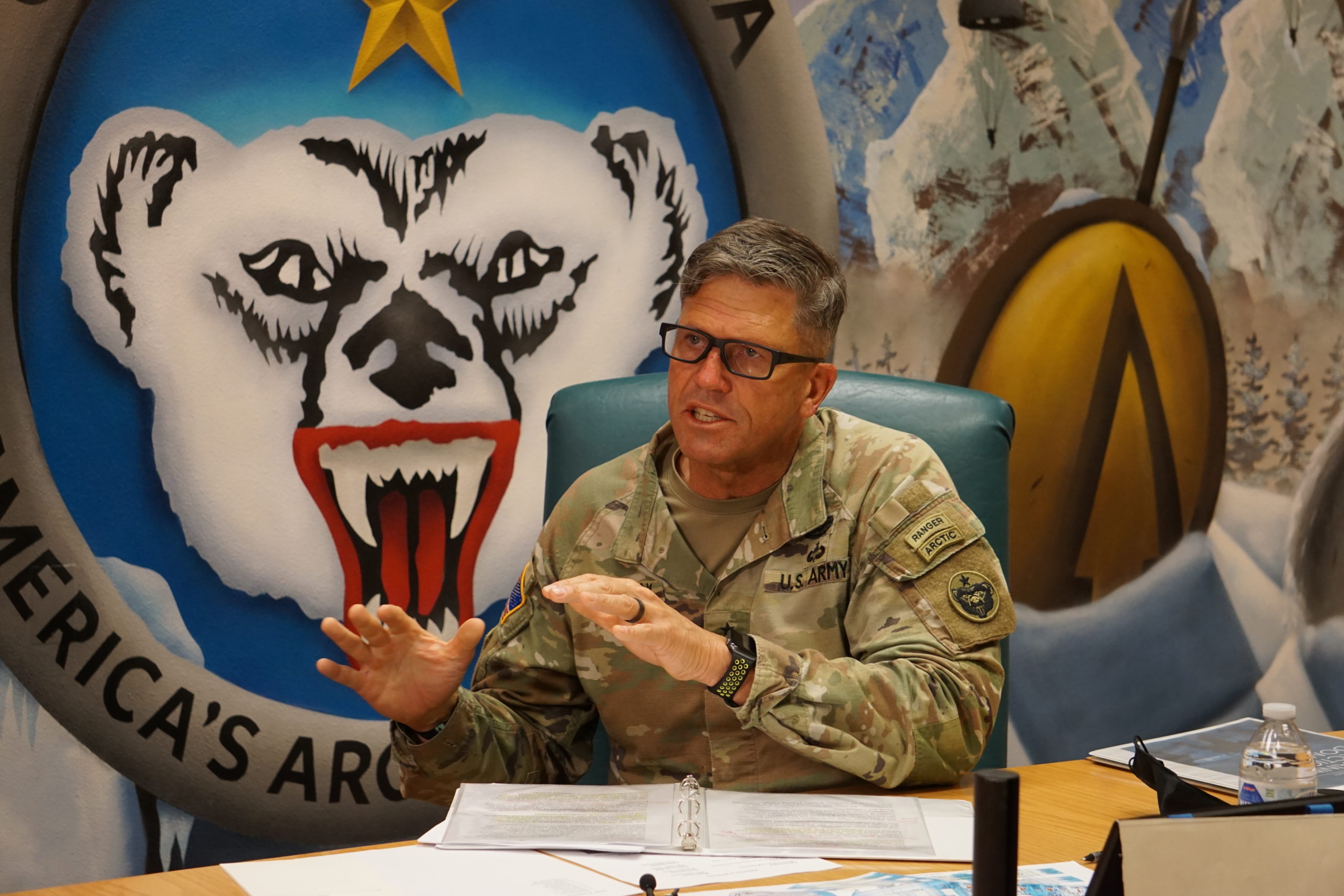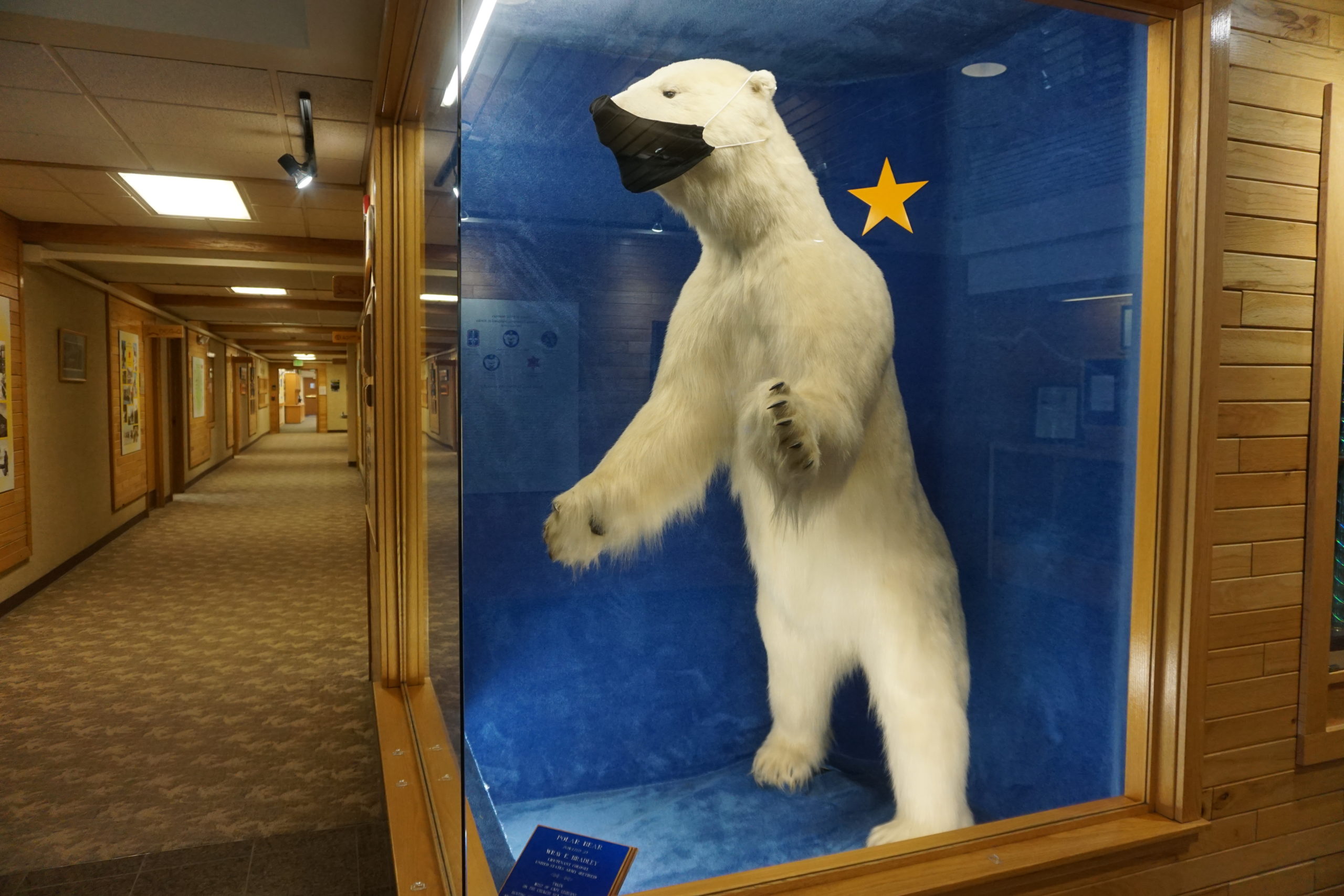US Army’s first Arctic strategy looks to “regain dominance” in extreme cold conditions
The Arctic considered a low-conflict region by the military, but this strategy comes as geopolitical competition has increasingly become a focus.
The U.S. Army’s first-ever Arctic strategy, released earlier this month, aims at “regaining Arctic dominance” by preparing troops to operate in extreme cold and high altitudes around the world.
The Army strategy lays out goals to train and equip forces, partner with Arctic allies and partners, and secure national interests.
The Arctic has typically been characterized as a low-conflict region by military services. However, this strategy appears amid a growing focus on geopolitical competition that accelerated during the administration of President Donald Trump.
The Army first began developing the strategy in July, soon after Trump called for a rapid expansion of the U.S. icebreaker fleet and around the same time James DeHart was appointed Arctic coordinator at the State Department.
The Coast Guard, Navy and Air Force, as well as the Defense Department, also have new or updated Arctic strategies.
“There’s always concern about militarizing the Arctic,” Major General Peter Andrysiak, commanding general of the U.S. Army in Alaska, told ArcticToday. “But our adversaries are already out there and operating. We’ve just got to enhance our readiness to be able to, if decided that we need to be used in a competitive manner, that we’re prepared to do so.”
At a press conference in Anchorage on Wednesday, Andrysiak told reporters that as part of the new focus, Alaska Army units were “going to be the Army’s premier cold-weather force, and we’re going to be designated Arctic units.”

Randy “Church” Kee, executive director of the Arctic Domain Awareness Center at University of Alaska and a commissioner with the U.S. Arctic Research Commission, told ArcticToday that in his opinion the strategy represented a practical approach to the region.
“By preparing and planning and thinking through the problem set, that’s a responsible approach to protect and defend our national interests,” he said. “I would not look at a document like this as over-signaling as much as I look at it as a thoughtful process.”
“Hopefully, if we do it right, competition does not become confrontation. Because by preparing to be strong and resilient and capable, that itself helps to dissuade potential adversaries,” Kee said.
The Army released a classified version of its strategy in January and the unclassified version on March 16. Creating a cohesive strategy in only a few months showed an “unprecedented” sense of urgency and investment in the region, Andrysiak said.
“The Arctic is simultaneously a vital area containing many of our nation’s natural resources and key shipping channels,” he said. “And it’s also a possible vector of attack,” he said.
Yet, he said, “we have lost our ability to dominate in the environment,” including being able to fight in extreme cold, snow or mountainous conditions.
Those conditions may be found inside or outside of the U.S. Arctic. The strategy specifically addresses deploying troops outside of Alaska, Andrysiak said.
The strategy emphasizes that the Army will work more closely with international allies and partners, such as Norway (a NATO member), Sweden and Finland (Arctic nations who aren’t NATO members) — and with the Alaska Native community. In the past few decades, many of those working relationships have languished, Andrysiak said. But now the Army has been “given the green light” to start rekindling or creating those connections.
As soon as COVID-19 restrictions lift, the troops will “get out to our European allies and partners and start learning as much as we can from them.” (Earlier this year a major Arctic military exercise in Norway that was to include U.S. troops was canceled due to coronavirus concerns.)
Soldiers spent the past winter in Alaska, training in the field during the coldest parts of the year and culminating with the exercise Arctic Warrior 21. This year’s exercise was focused on an airborne brigade combat team and its support battalion.
Plans are already underway for Arctic Warrior 22, which will involve both brigade combat teams and Echelons Above brigade in an exercise that will happen simultaneously with Arctic Edge. Canada will participate in Arctic Edge, and other allies and partners may join the exercise as well, Andrysiak said.
The Arctic units are also planning exercises with India in the Himalayas, along the border with China, the Army Times reports.
The Arctic is the only geographic region Kee is aware of where all services have created strategies.
“To me, it shows that the Arctic is an important region for service management,” Kee said. “You want to cover all the domains” (that is, sea, air, space, and land). “If crisis comes, you’ve organized, you’ve prepared, you’ve trained, you’ve equipped yourself to be able to respond.”
These cold-weather forces could also be deployed during or after natural disasters in Alaska or other parts of the Arctic, particularly in very remote regions, Andrysiak said.
Part of the new strategy will involve modifying the processes for identifying and assigning soldiers to Alaska-based units. “We want to make sure that we can get out there and reach out to those that are more apt to thrive in this environment,” he said, such as recruits who are already experienced skiers or snowboarders.
The Arctic, with its extreme weather and limited infrastructure, is “far different” from any other environments where the Army operates worldwide, Andrysiak said. “This is a very unforgiving environment, and of all that I’ve operated in, the margin for error is pretty high because it can be very dangerous for soldiers.”
“Our ability to conduct effective operations in the Arctic requires a lot more than just a couple of pieces of unique equipment,” Andrysiak said. “This is really a wholesale change to do this correctly.”
Kee, who has flown as a military pilot in the Arctic, said it takes time to prepare for those differences. “It is a difficult place to operate. Machinery doesn’t work so well at minus 40.”
“It is an area that takes time to understand, and it’s also a region that is changing quite dramatically,” Kee said.

Climate change in the region is one driver for the Army’s renewed focus on the North, Andrysiak said. “We know that change is occurring and multiyear ice is receding.”
“There’s no doubt that, as the Arctic opens up, it’s going to increase competition,” he said, citing adversaries who are “also doing their own thing” in a changing Arctic. “So we’ve got to be prepared.”
Andrysiak is in his final months of command in Alaska, and a new commander will soon follow. But he expects a strong focus on the region to remain through the change in leadership.
“What we got to do here, it’s got to be measured in years, because this is just a very unique environment,” Andrysiak said.







